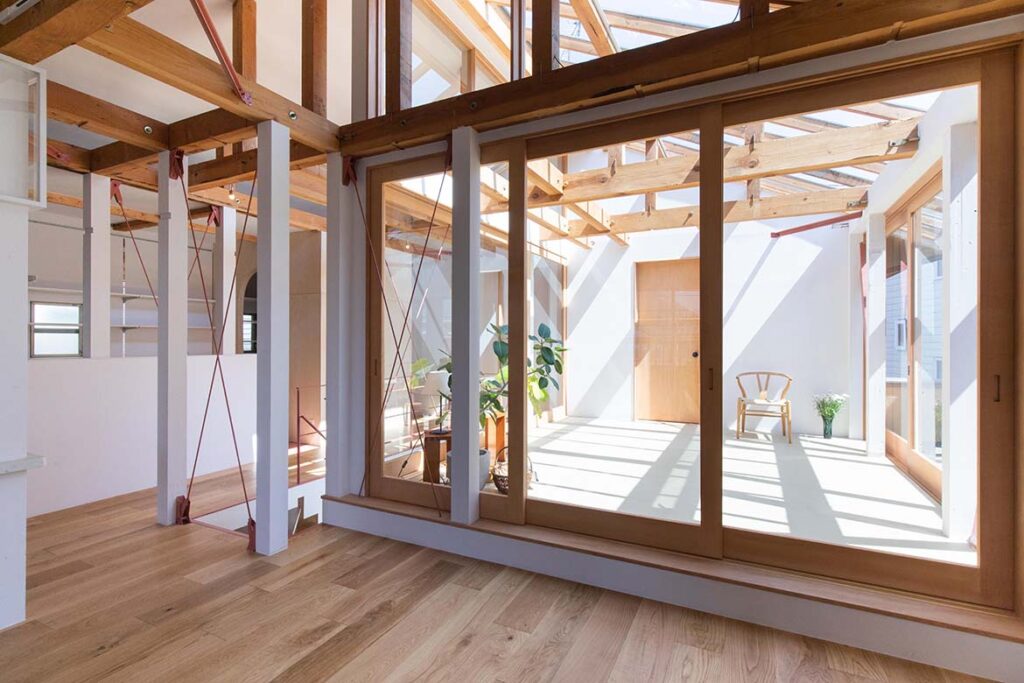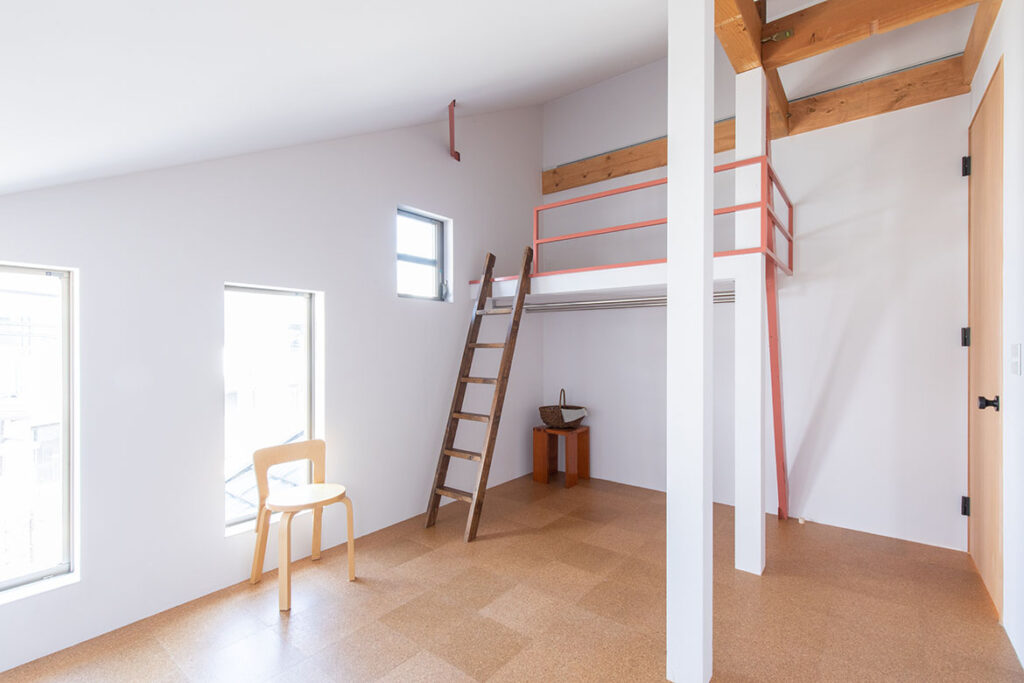In Japan’s Kantō region, House For Family examples the potential of adaptive reuse for a young family.

October 6th, 2023
How can an inherited family home built over six decades ago meet the needs of a second-generation owner and their young family? Nestled within a dense, suburban neighbourhood in Japan’s Kantō region, House For Family explores how simple changes can positively transform an existing property for generations to come.
When Japanese architect Koki Sugawara of Tokyo-based architecture firm Koki Sugawara Architects was enlisted to transform an existing two-storey home inherited from the client’s parents to accommodate living with their two children, he approached the design by prioritising their primary needs. Sugawara explains, “The client’s parents owned an unused house where they wanted to live, but the layout didn’t suit their lifestyle. The project started from there with the idea of making improvements.”

Initially, the client requested a full renovation of the inherited family home. Yet due to the large costs associated with the volume of the house, the client opted for rearranging the internal layout. “One major challenge of this project was that the existing house had two floors and a total floor area of about 178 square meters, which was a bit too large for the family.” Sugawara shares.
As the first floor was already sufficient in size, with the potential that the client’s parents may return to occupy the ground floor in the future, renovation efforts were directed to the second floor. Sugawara retained existing columns and beams, utilising the building’s original framework. “We made efforts to incorporate exposed structural elements as part of the design, adjusting their position and using paint to integrate them aesthetically.”

Due to the house’s close proximity to neighbours and regulations against building extensions, Sugawara aimed to instead increase internal ‘vertical space’ by removing a section of the roof on the second floor and replacing it with a wide skylight. He explains, “As the client wanted a bright home, we positioned this space to capture light throughout the day. In winter, it allows the sunlight to warm the interior, improving heating efficiency. In summer, we can adjust the sunlight with shades and open the windows wide to let the breeze flow in.”
To accommodate a play area for the couple’s children, a new semi-outdoor space was created with waterproof FRP flooring partially under the skylight. Referred to as the ‘sunroom’, it is accessed through large, glass sliding doors allowing for abundant natural light akin to a garden.

Importantly, through using contrasting materials for different ‘zones’ of the house – such as ceramic tiling, hardwood or sisal hemp — each area is easily identified by the senses. “We incorporated natural materials wherever possible, arranging them to create clear distinctions through tactile sensations when encountering different materials,” Sugawara explains of the approach. “For example, solid wood flooring and porcelain tiles feel and perceive temperature differently, making it easy to understand the different zones.”
sugawarakoki-archi.com




A searchable and comprehensive guide for specifying leading products and their suppliers
Keep up to date with the latest and greatest from our industry BFF's!

XTRA celebrates the distinctive and unexpected work of Magis in their Singapore showroom.

In this candid interview, the culinary mastermind behind Singapore’s Nouri and Appetite talks about food as an act of human connection that transcends borders and accolades, the crucial role of technology in preserving its unifying power, and finding a kindred spirit in Gaggenau’s reverence for tradition and relentless pursuit of innovation.

The $160 million transformation of 500 Bourke Street in Melbourne’s CBD has revitalised a 1970s Brutalist icon, originally designed by Godfrey & Spowers.

Contemporary meets heritage at the Sawai Man Mahal in Rajasthan, the perfect place to stay for a holiday in this beautiful region of India.
The internet never sleeps! Here's the stuff you might have missed

Gerald Matthews of Matthews Architects provides insight on South Australia’s 2024 Future Living code amendment, focusing on co-located living.

Informed by Māori traditions and inspired by the symbolism of the Harakeke plant, Arnya Karaitiana’s new collection for Milliken weaves together heritage, well-being, and modern craftsmanship.